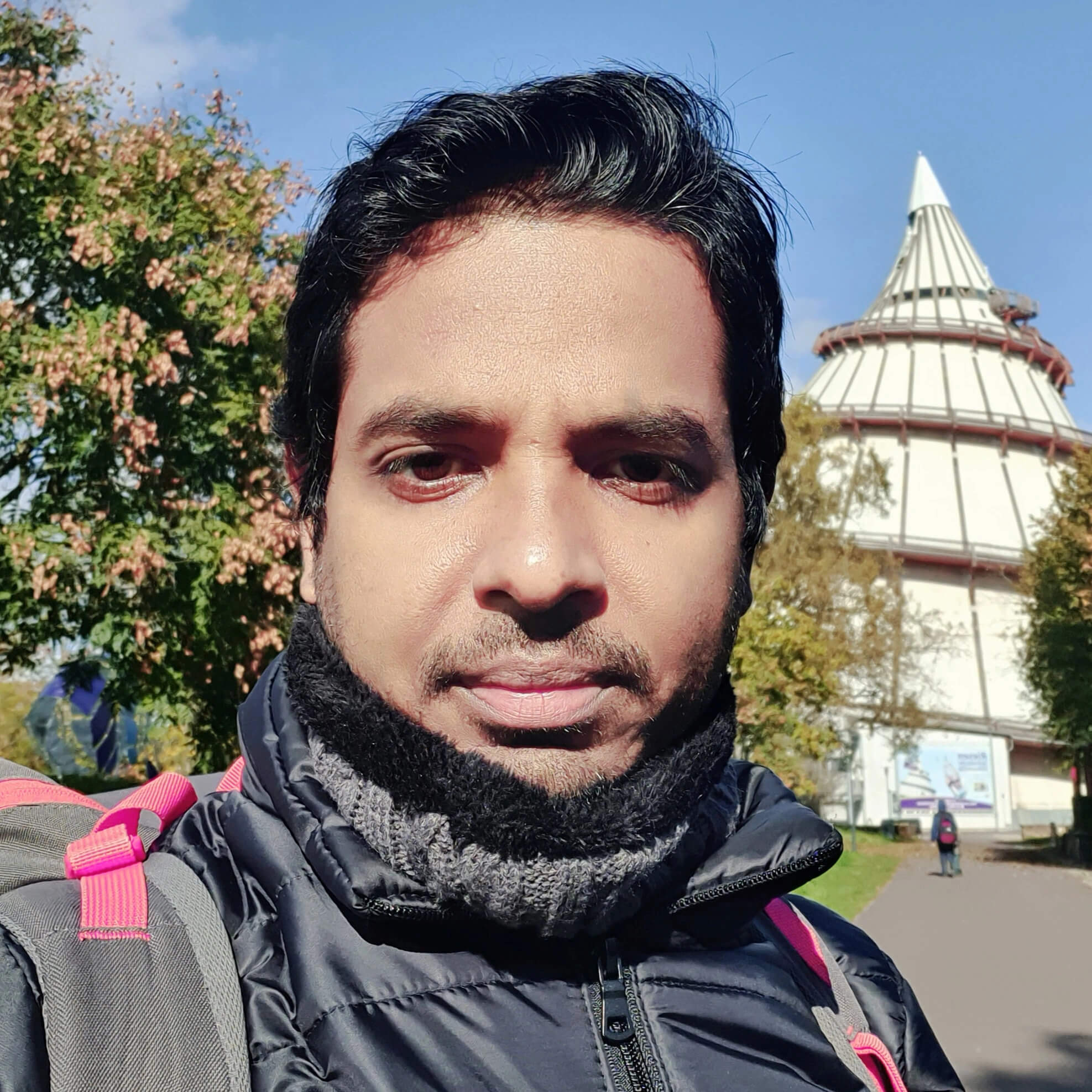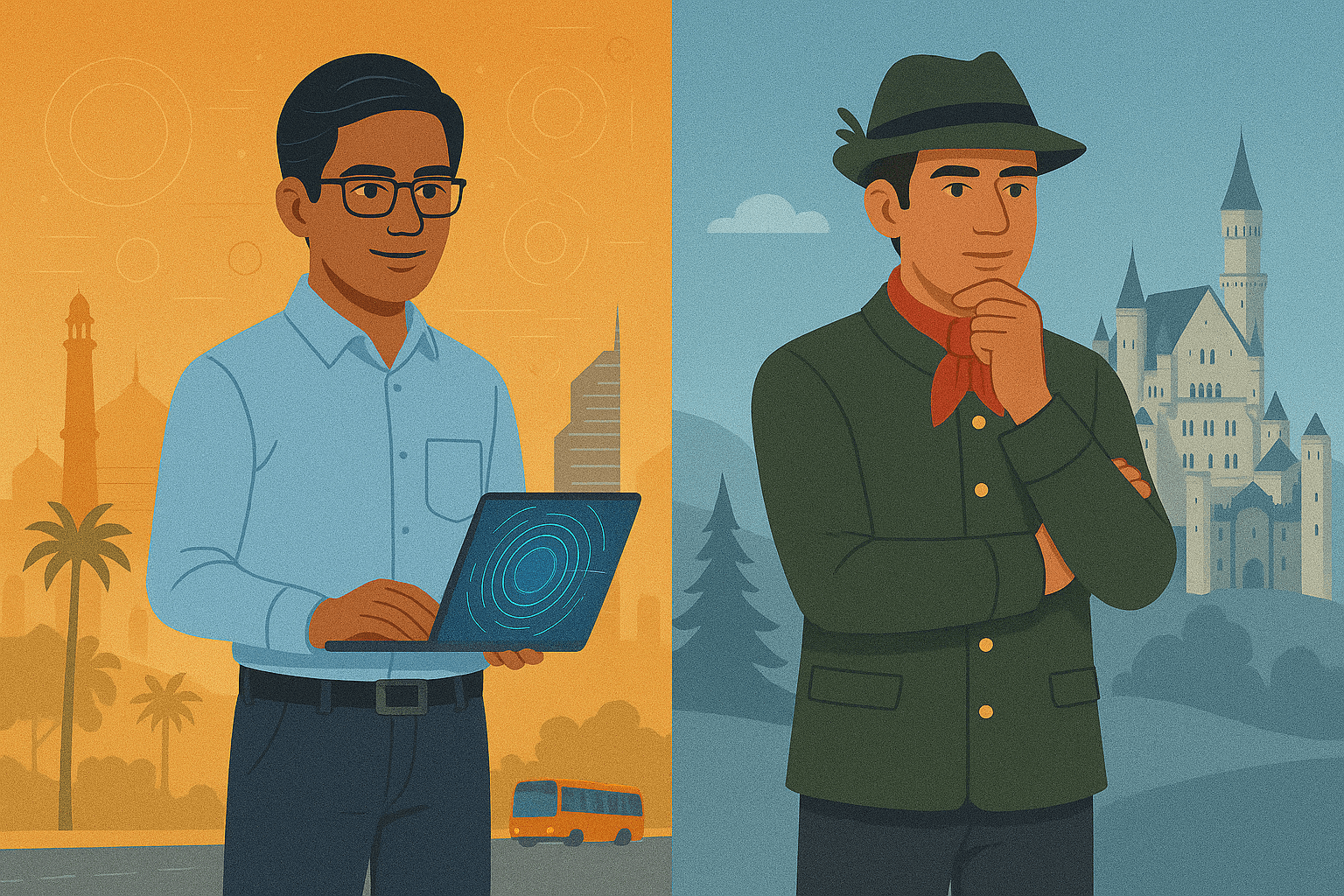
3 Tiny Cultural Quakes That Redefined My Normal (Part 2)
Through humor and humility, I reveal how cultural contrasts rebuild “home” piece by piece—not by erasing the past, but by laughing through the mess. The series continues...
If Part 1 of this series was about learning to laugh at my Frankenfood and embrace snowball fights, Part 2 is where I discovered that cultural adaptation isn’t just survival- it’s about finding unexpected connections in the most ordinary places. Here are three new tremors that reshaped my German-Indian reality.
Apartment WhatsApp Groups → Neighbourhood Stammtisch
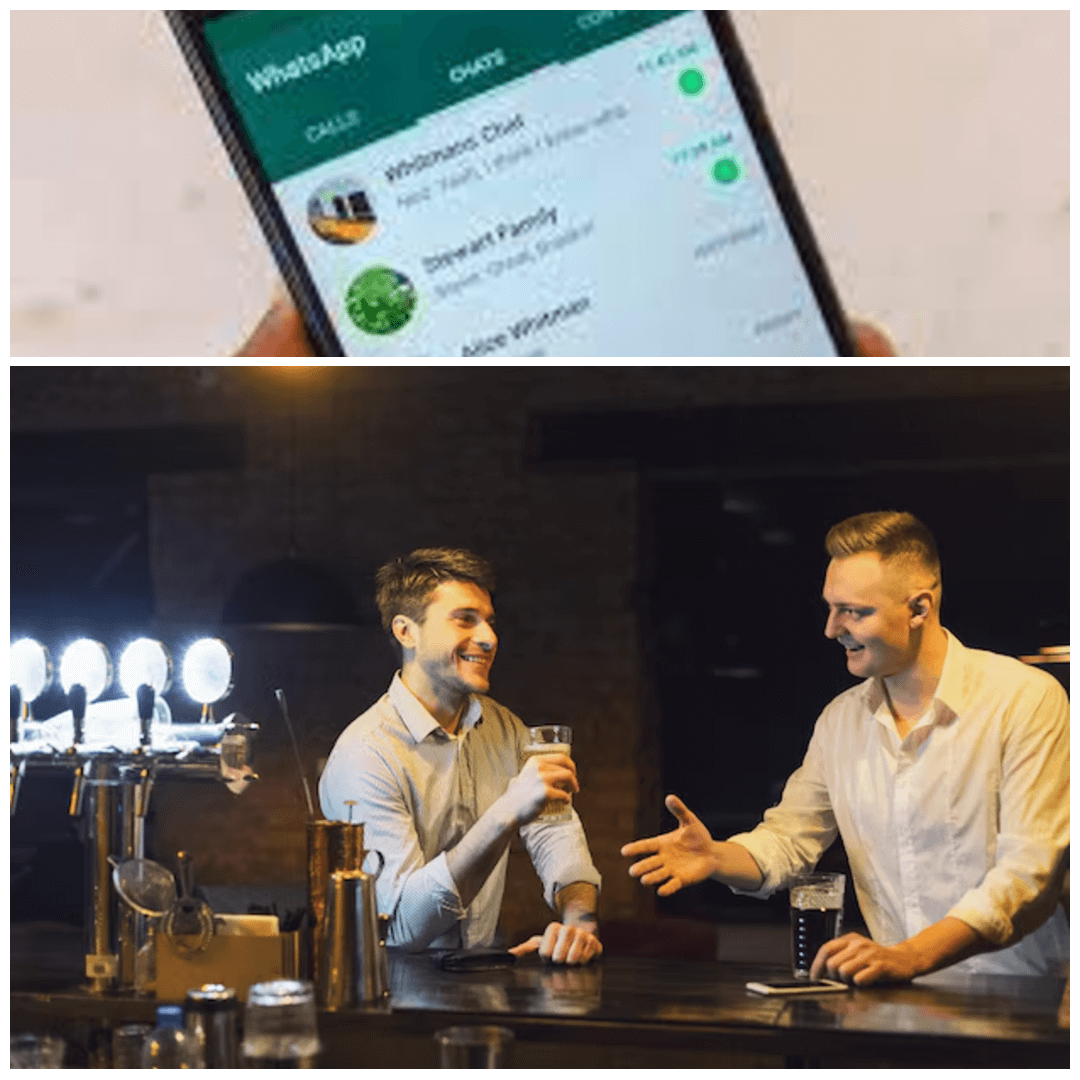
In Bangalore, my apartment complex had more WhatsApp groups than residents. There was a group for tennis, a group for complaining about tennis noise, and even a group for sharing photos of stray dogs (with debates about whether they were “good boys” or security threats). We bonded over shared goals, like petitioning the builder to fix leaking pipes. Still, once the crisis passed, we retreated into anonymity.
In Germany, I live in a five-story building with 10 families. For months, my only interaction with neighbours was a polite “Hallo” in the stairwell—no WhatsApp groups, no drama. Then, one evening, my German neighbour Philipp invited me to a Stammtisch, a monthly meetup at our local brewery.
At first, it felt like a scene from a medieval guild: a round table, steins of beer, and debates about everything from climate policy to the best brand of garden gnomes. Unlike Bangalore’s transactional WhatsApp chats, the Stammtisch was about being present. As Philipp put it: “We don’t talk at each other here- we talk with each other.”
Takeaway:
Connection isn’t about convenience; it’s about showing up-literally.
Street Food Dosa → Döner Diplomacy
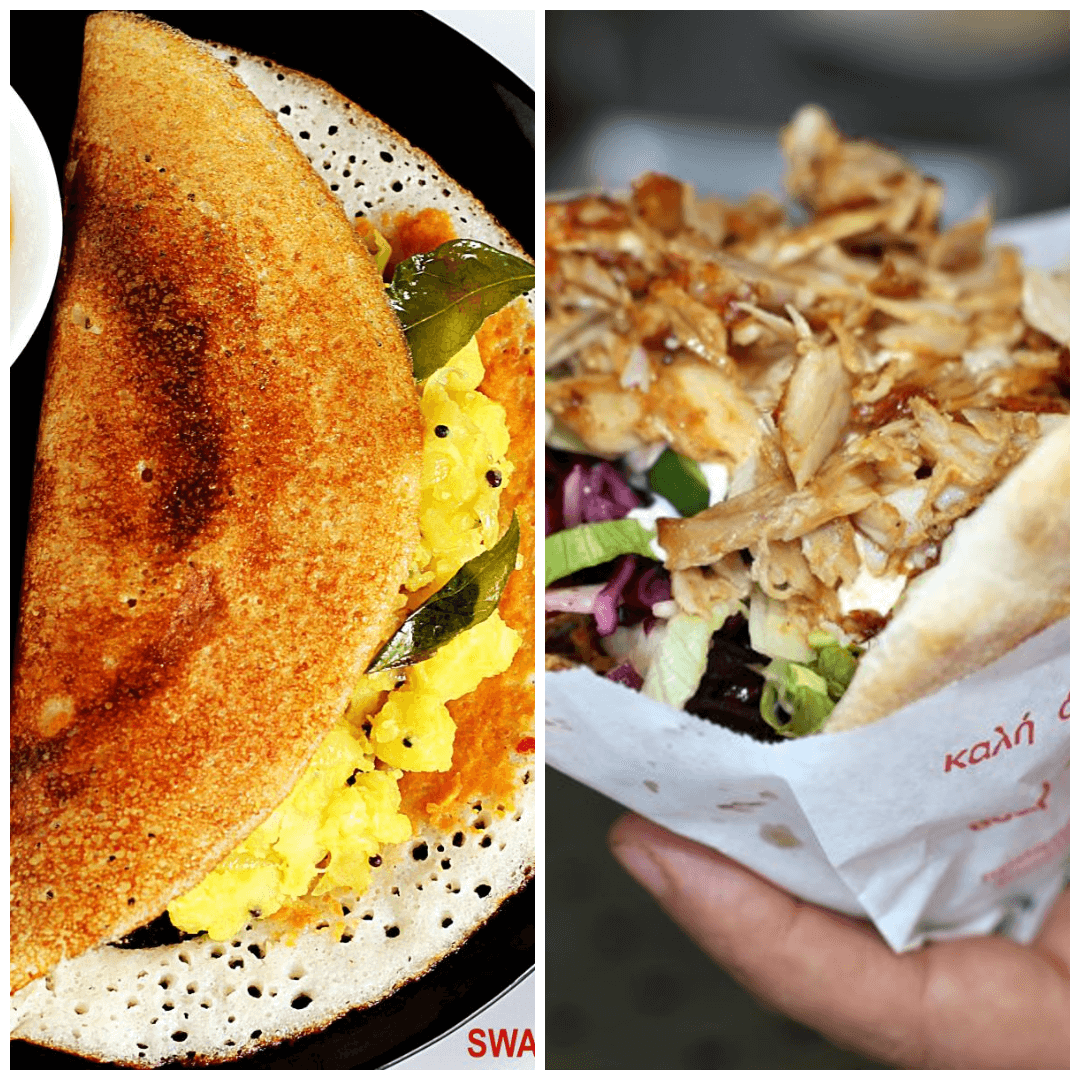
In Bangalore, street food was a competitive sport. I’d argue with friends over whose favourite dosa stall had the crispiest edges or which idli-vada vendor added the most flavourful white chutney. Food wasn’t just fuel- it was identity.
In Germany, my culinary world narrowed to one word: Döner. At first, I dismissed it as “just a kebab.” Then I learned its backstory. Introduced by Turkish immigrants like Kadir Nurman in the 1960s, the Döner became a symbol of integration, so beloved that Berlin now has more Döner shops than Istanbul. My German friend Henry put it best: “A good Döner is like a good German: efficient, satisfying, and secretly multicultural.”
Now, I’m the guy dragging friends to “authentic” Döner spots, debating whether the salad-to-meat ratio is sacrilege or genius. It’s not the variety of India, but it’s a delicious lesson in how cultures borrow, adapt, and claim something as their own.
Takeaway:
Sometimes, depth trumps diversity.
Monsoon Chai → Glühwein Therapy
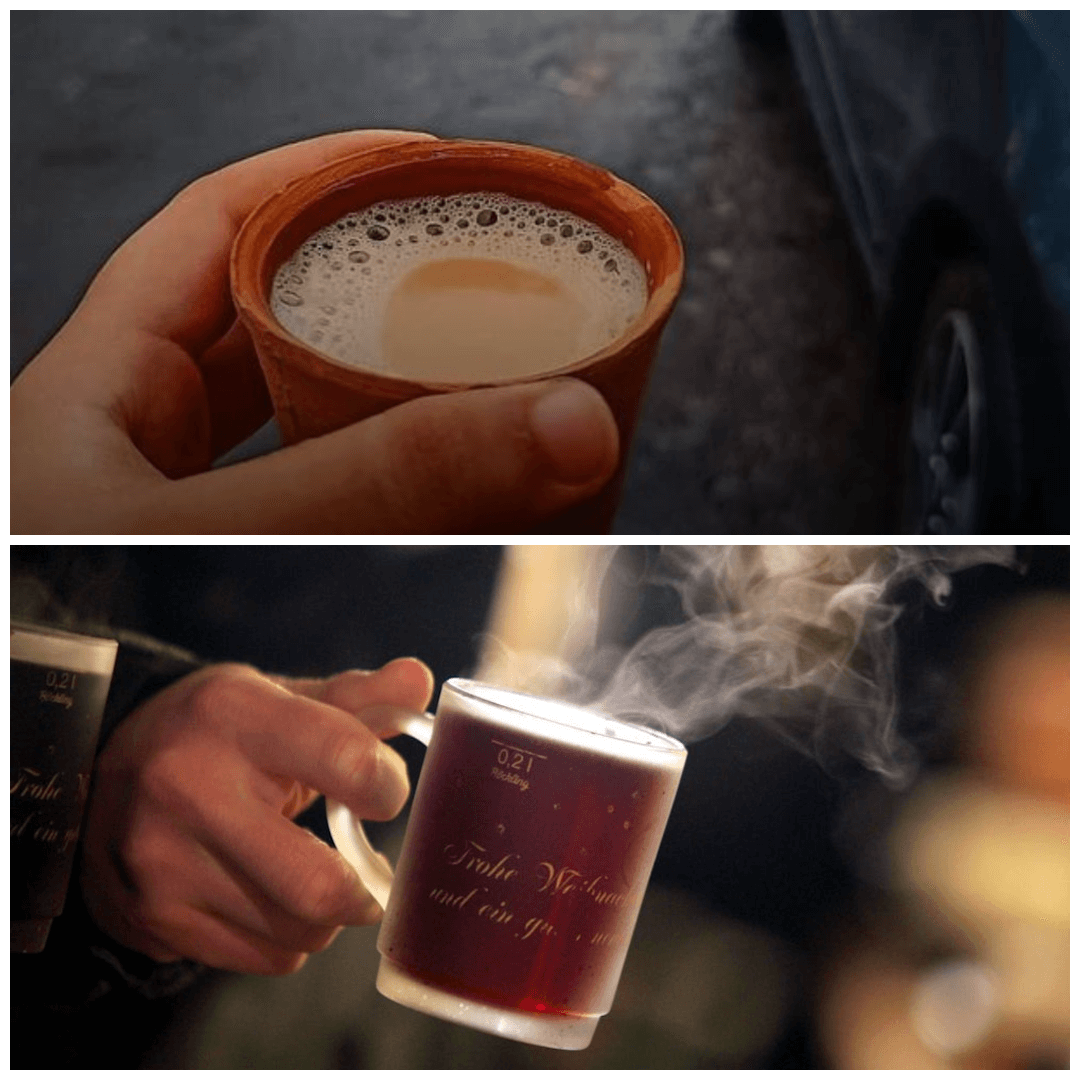
In India, I rarely drank tea, except during monsoon rains. There’s something about the smell of wet earth that demands a steaming cup of chai, ideally slurped at a roadside stall while arguing about cricket.
My caffeine loyalty shifted to coffee in Germany, but winter introduced me to Glühwein. This mulled wine, a Roman invention perfected by Germans, is less a drink and more a social contract. At Christmas markets, strangers clink glasses under fairy lights, their breath visible in the cold. It’s monsoon chai’s polar opposite- communal warmth in a hibernation season.
The first time I tried it, I burned my tongue and spilled cinnamon down my coat. But as the warmth spread, I realised: this is how Germans survive winter. Not with umbrellas, but with laughter, spice, and enough alcohol to make subzero temperatures feel cosy.
Takeaway:
Rituals adapt, but the need for warmth-literal and emotional-remains universal.
Leaving you with this…
Cultural whiplash isn’t just about what you lose but what you gain in the chaos. A Stammtisch table, a Döner shared with friends, a mug of Glühwein in mittened hands: these aren’t just German experiences. They’re reminders that “home” isn’t a place you’re from, but a patchwork of moments you choose to stitch together.
So here’s to the next quake. I’ll be ready with a Döner in one hand and a Glühwein in the other.
Stay tuned for Part 3.
